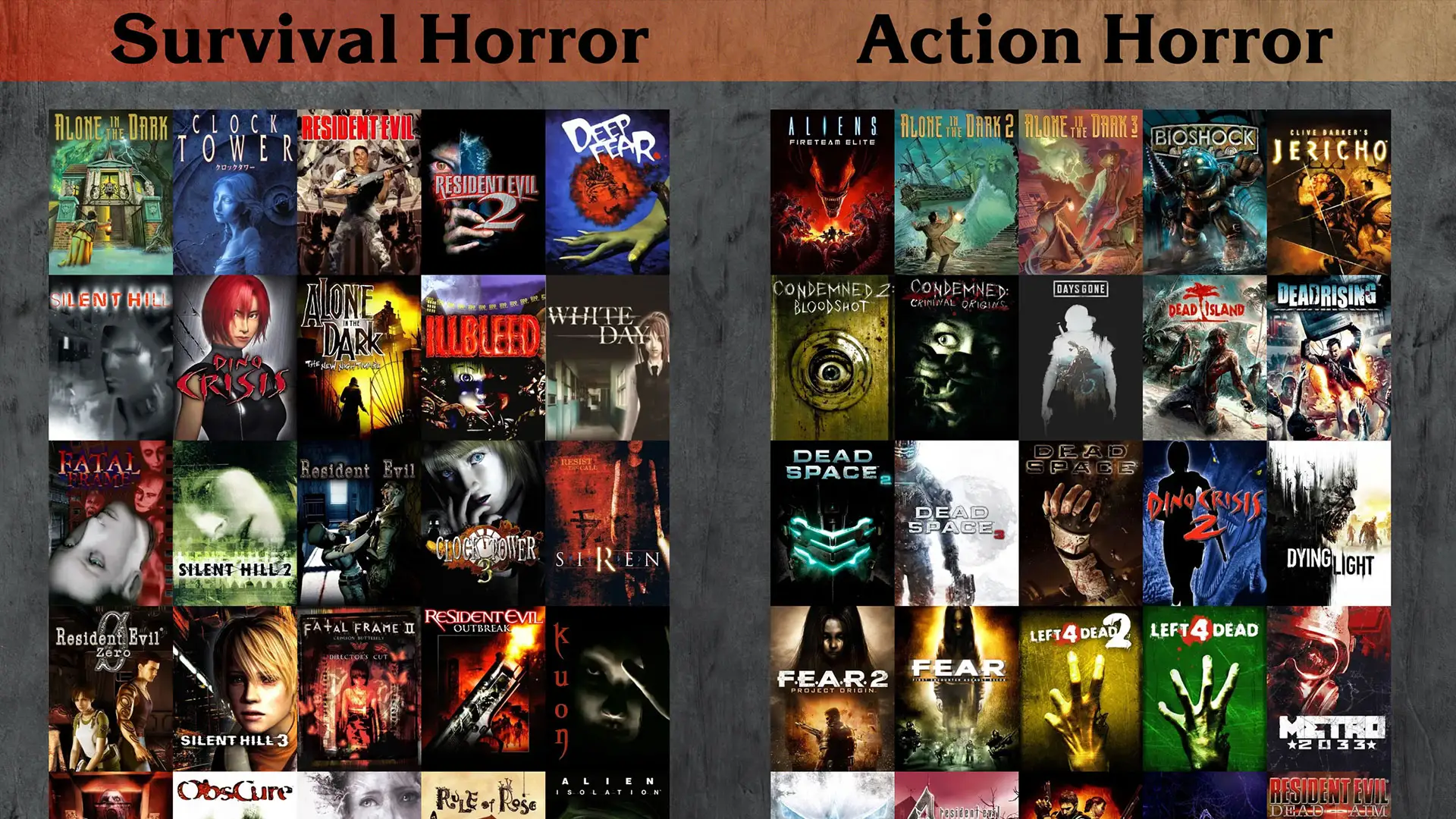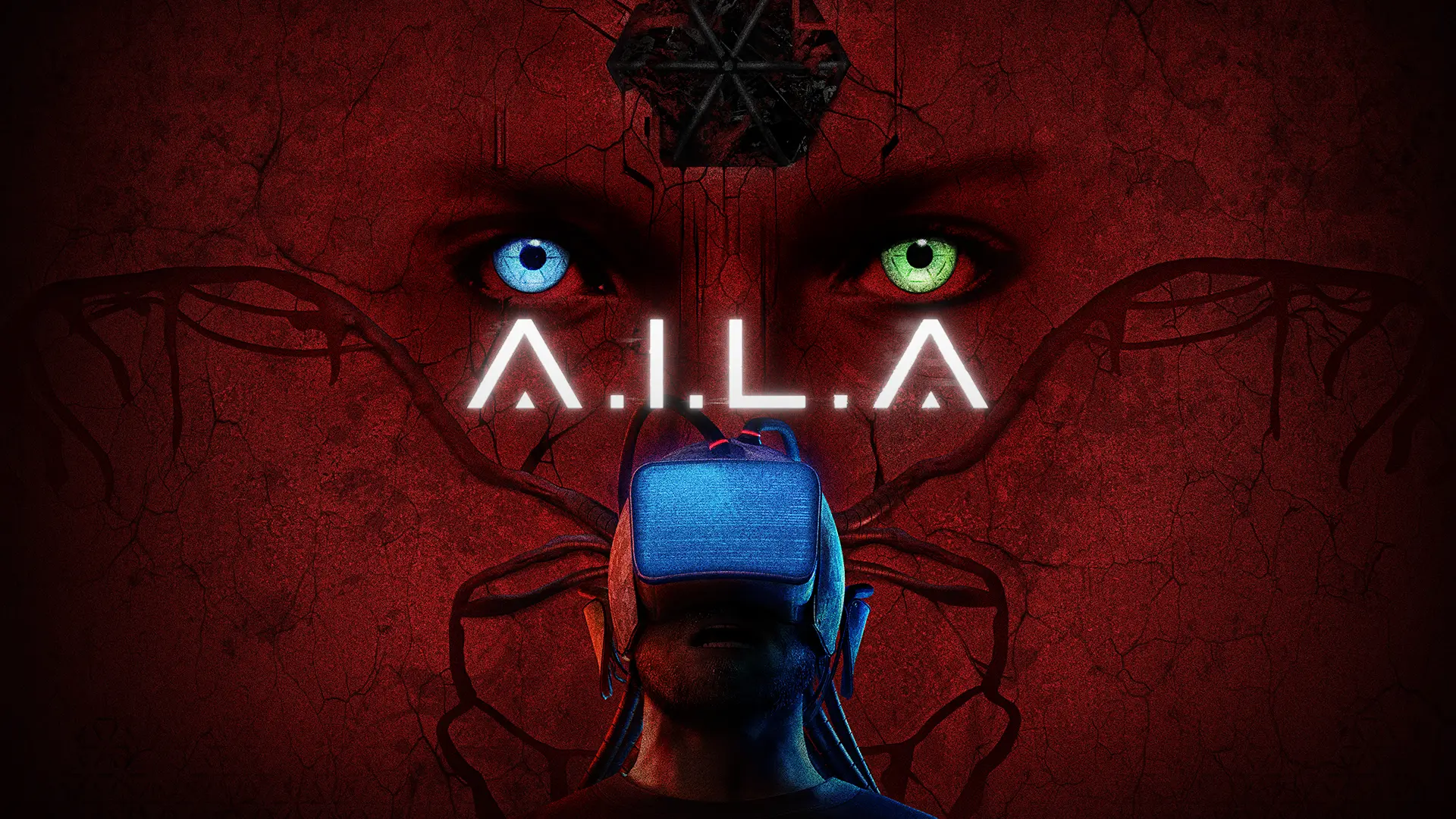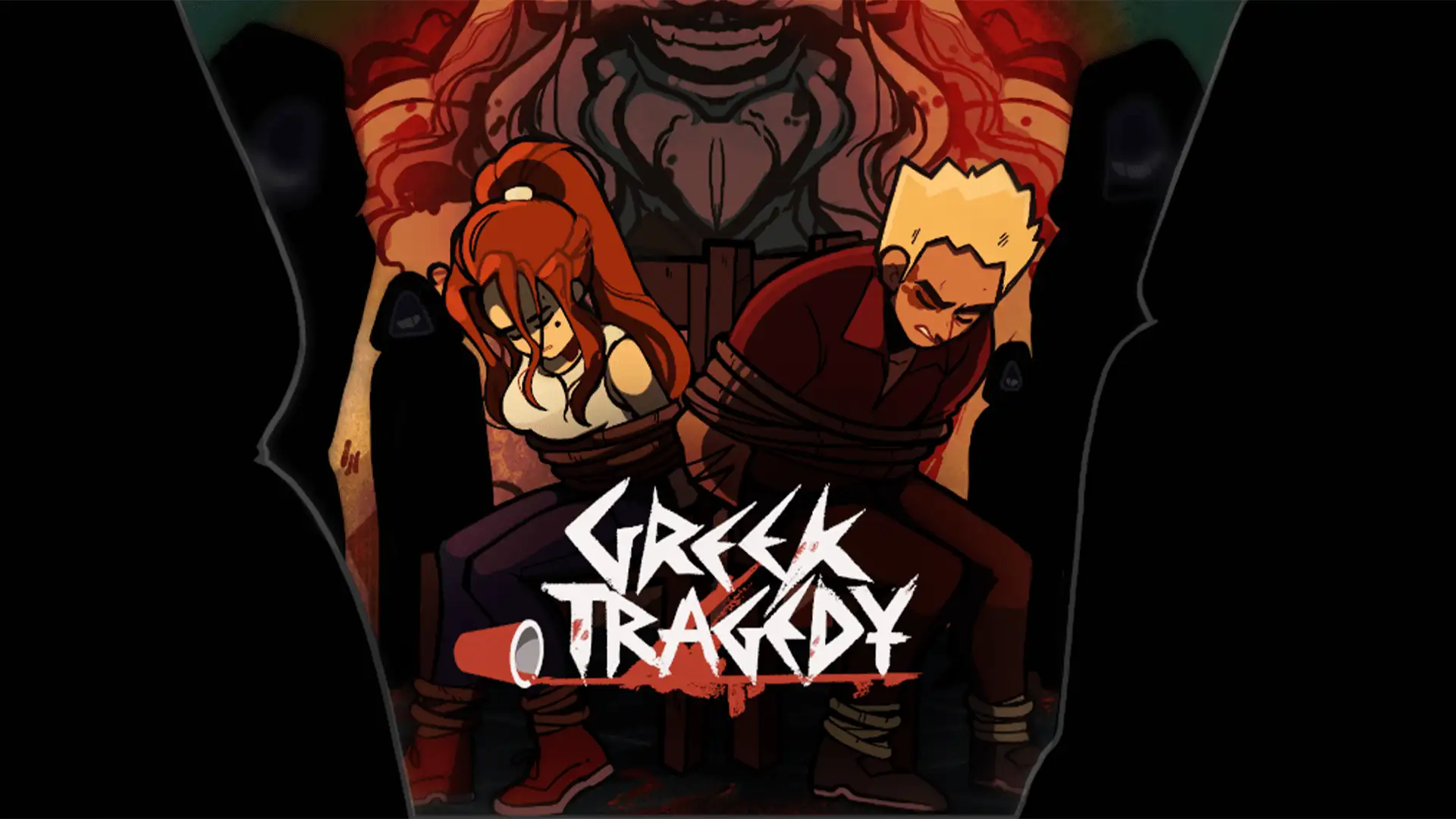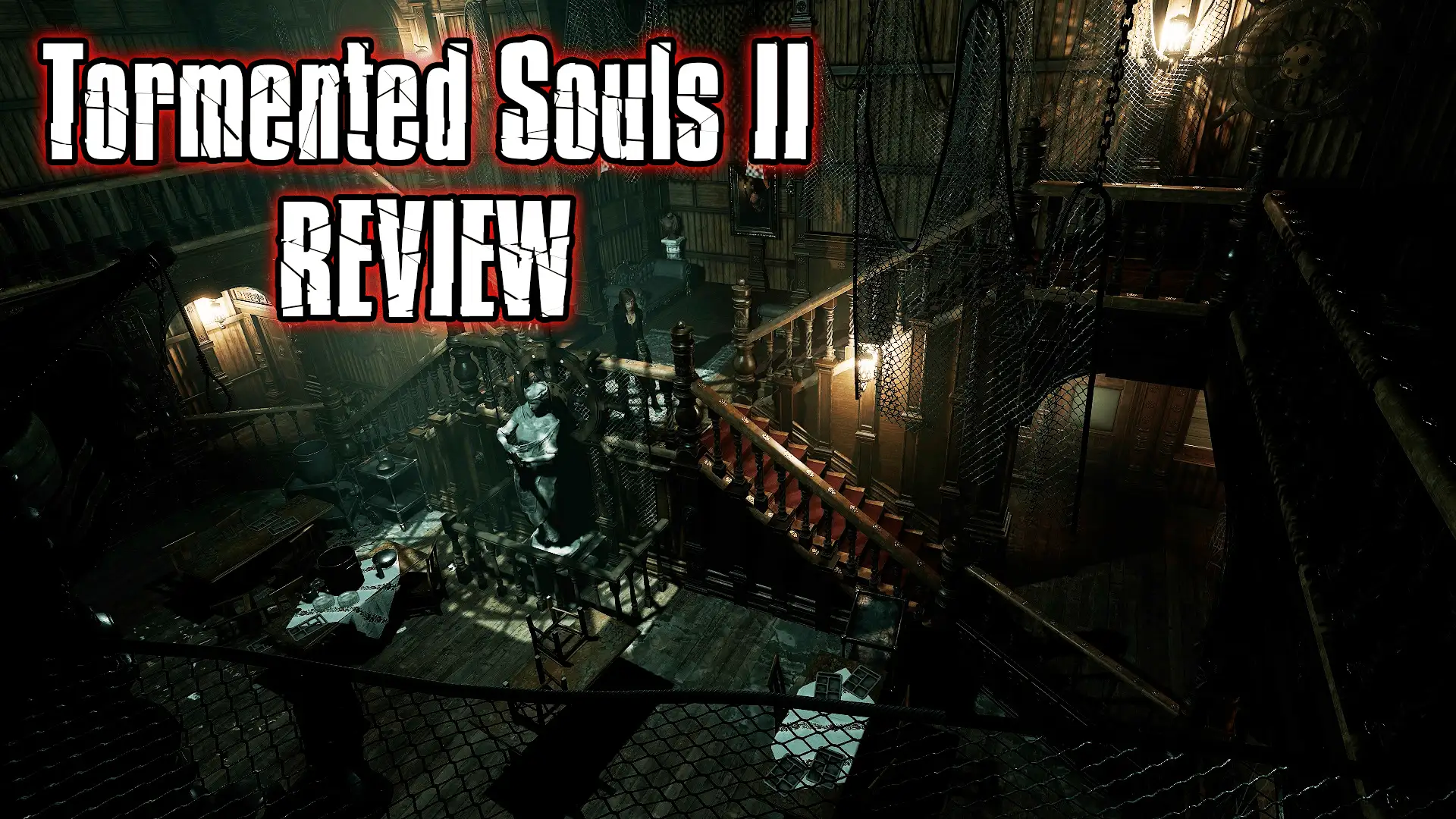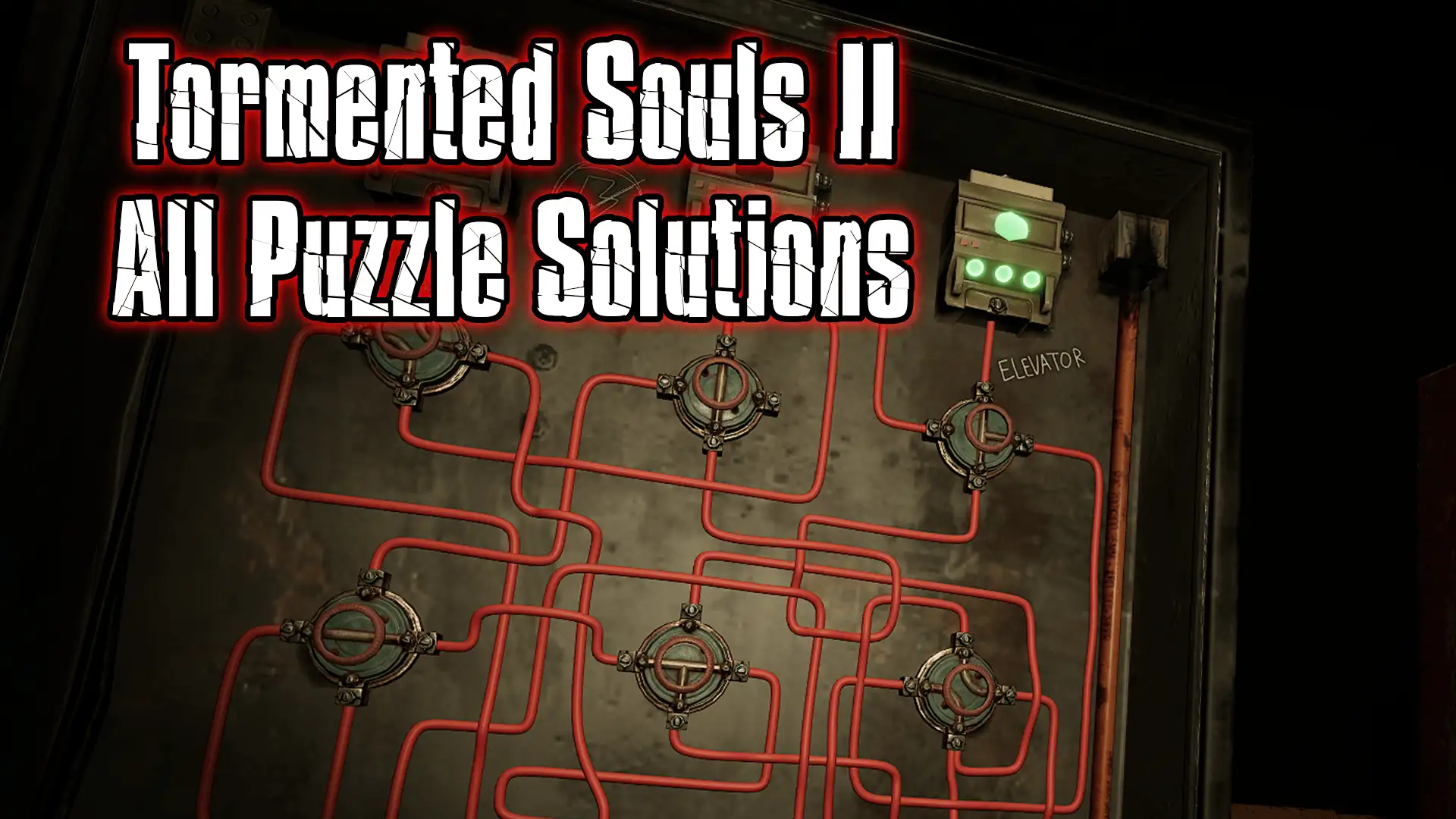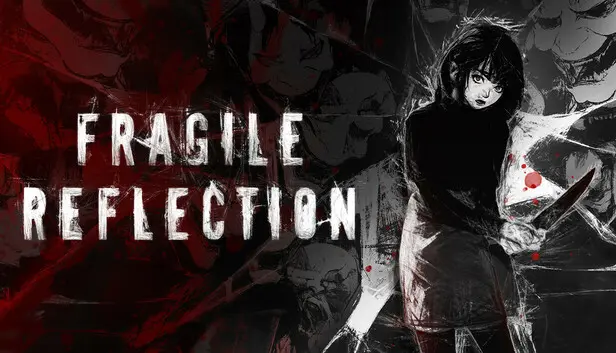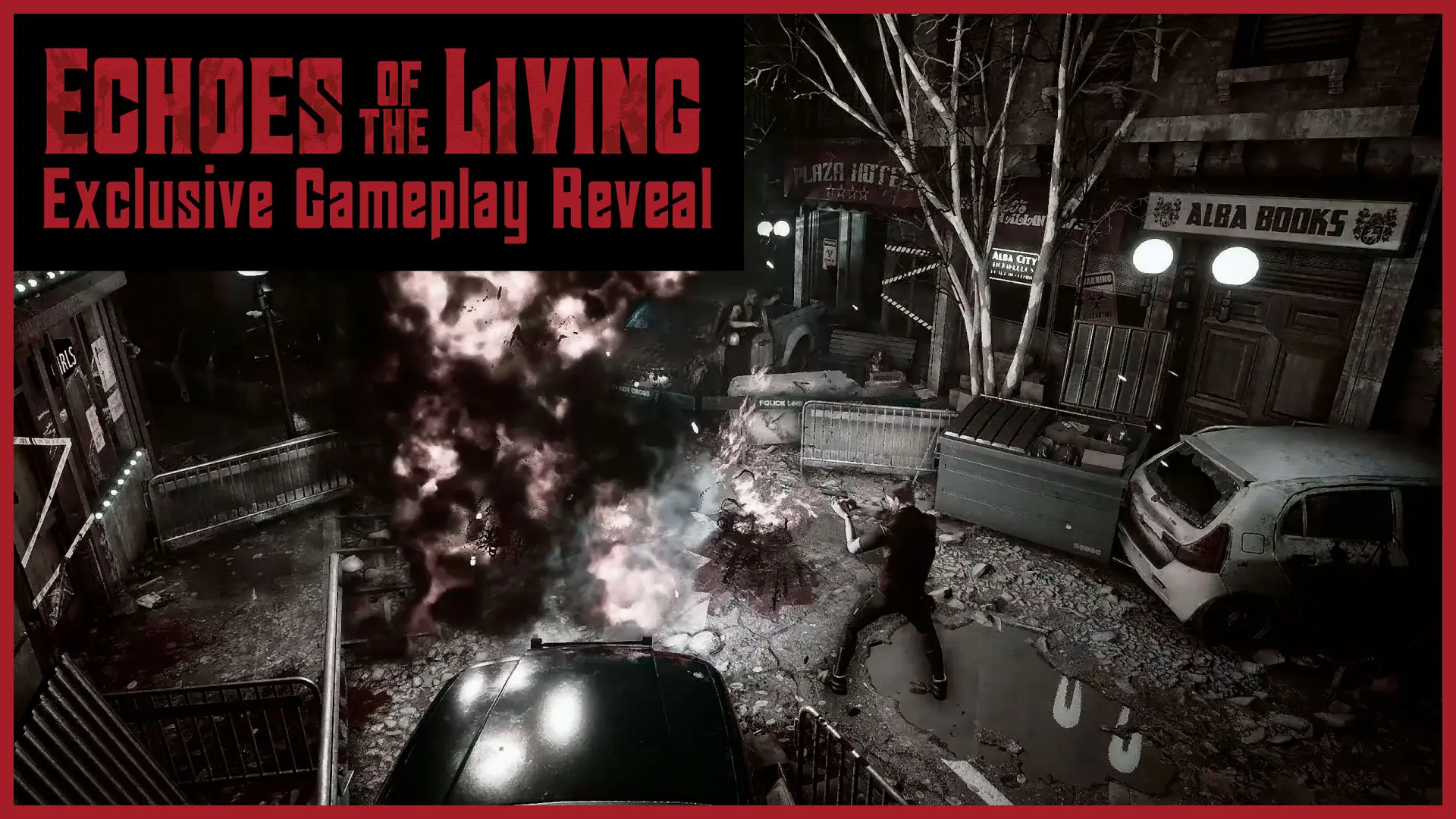Over the past year and a half, I’ve been cataloguing every survival horror game I can find, with the goal of creating the most comprehensive list of survival horror titles to date. During my research, I kept encountering a familiar image titled Survival Horror vs. Action Horror. While I agree with many of the selections in that now-iconic comparison, I decided it was time to create a modernised version of the image, updated to reflect more recent releases.
Back in early 2012, a blogger named Ryan created the original image and accompanying post on a site called therewillbetuna.blogspot.com. Unfortunately, the website is no longer online. However, the image gained widespread attention (and some controversy) across the horror gaming community. The fallout from Ryan’s post was even documented shortly afterward on another classic horror blog, Chris’s Survival Horror Quest.
If you’re interested in reading chris’ article you can find the discussion here: https://horror.dreamdawn.com/?p=8248
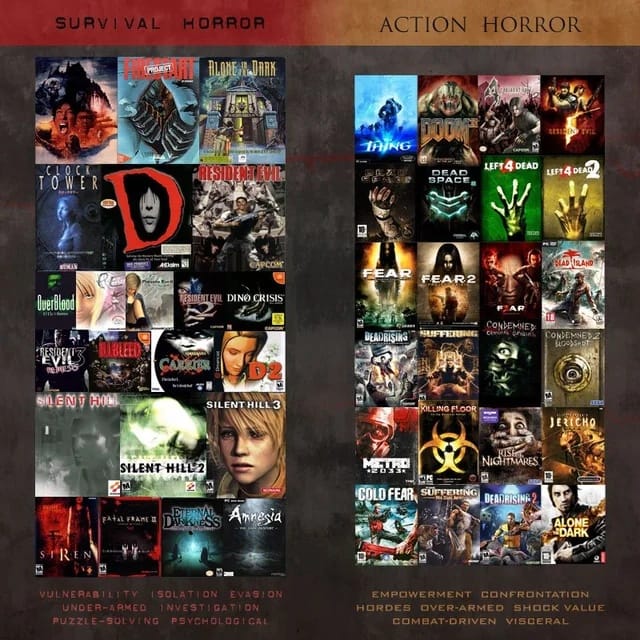
Chris argues that “categorization is ultimately futile because any sort of interesting category is going to be subjective.” I completely disagree. While subjectivity does play a role, we can still identify consistent, objective features that define a game’s genre. Take Resident Evil, for example—Capcom literally coined the term “survival horror” to describe it. By that standard, calling it anything else would ignore its foundational role in shaping the genre. To claim Resident Evil (1996) isn’t a survival horror game would be like saying Castlevania isn’t a Metroidvania, or Dark Souls isn’t a Soulslike.

When we look at specific franchises, we can clearly see how they start within one genre and shift over time. These shifts aren’t subjective impressions; they’re observable design changes that mark a move from survival horror to action horror. Let’s look at a few notable examples.
Take Alone in the Dark, for example—a series that helped kickstart the survival horror genre. While the original entries emphasised exploration, puzzle-solving, and vulnerability, later installments leaned heavily into action-focused gameplay. The Dino Crisis series shows a similar trajectory: the first game is rooted firmly in survival horror, but Dino Crisis 2 pivots so far into action territory that it plays more like an arcade shooter than a horror game. Then there’s the Parasite Eve series—Parasite Eve 2 still fits within the survival horror framework, but its sequel, The 3rd Birthday, is undeniably an action game in both structure and design.
One of my more controversial choices is placing Resident Evil 4 in the action horror category. While many fans argue that it “redefined the genre,” the reality is more straightforward: survival horror didn’t evolve—Capcom shifted the series toward action to sell more copies. Resident Evil 4 was a calculated pivot, designed to appeal to a wider audience, and it worked. The game was a massive commercial success, but it also marked a clear break from the survival horror roots of the series. That shift didn’t happen in isolation either—it paved the way for a whole wave of over-the-shoulder action games like Dead Space, Gears of War, The Last of Us, and The Evil Within.
These aren’t just my opinions—they’re meaningful shifts in design, mechanics, pacing, and player experience. With close analysis, it becomes clear that not all horror games are built the same. Categorisation isn’t futile—it’s a useful lens that helps us understand how the survival horror genre has evolved and where individual titles truly belong.
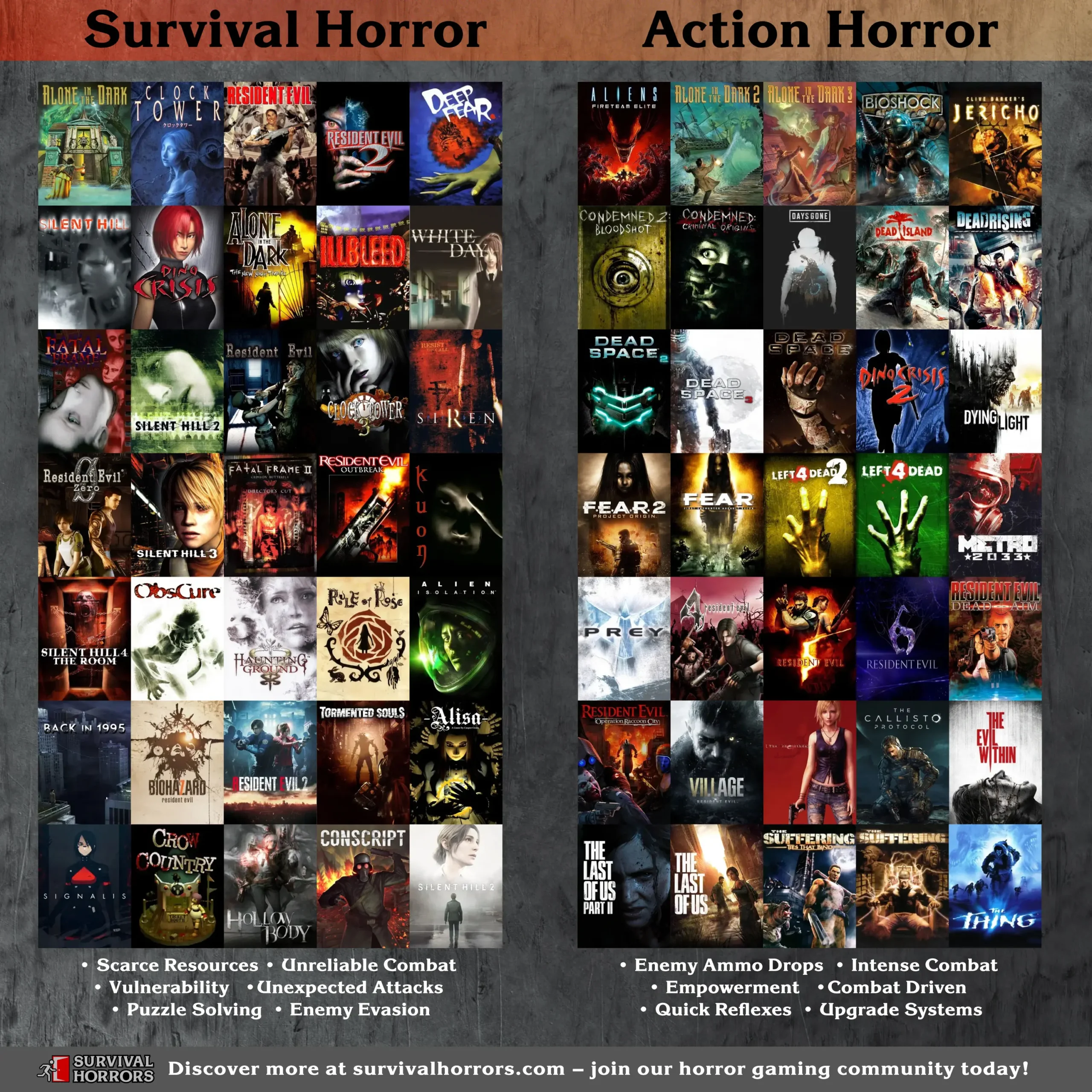
There are a few survival horror picks from Ryan’s original image that I disagree with. One notable example is Sweet Home, which is often labelled as survival horror, but is more accurately described as a 2D, horror-themed RPG. While it’s frequently cited as an inspiration for Resident Evil, Alone in the Dark actually shares far more in common with it—something Shinji Mikami himself has acknowledged in interviews, including this one.
While Sweet Home laid early narrative and inventory foundations, Alone in the Dark provided the 3D camera, controls, and room structure that defined how Resident Evil played.
Without labouring the point, here are several features that Alone in the Dark (1992) shares with Resident Evil (1996):
- Fixed camera angles
- Tank controls
- A male or female protagonist trapped in a mansion (Derceto Manor / Spencer Mansion)
- Hub-and-spoke world design: each room is a self-contained diorama, with progress gated by keys and puzzle items
- Gameplay alternating between exploration, puzzle-solving, and sudden combat encounters
- Frequent backtracking through earlier rooms once new keys or items are found
- Scarce ammunition, limited healing items, and a capped inventory—forcing players to plan routes and conserve resources
- Environmental riddles (e.g. moving statues, pushing blocks, combining items), alongside cryptic clues found in scattered documents
- Locked doors that require emblem‑ or key‑shaped quest items to open.
- Narrative delivered through scattered diary pages, letters, and files that piece together the mansion’s dark history
- Door-opening (and in Alone in the Dark, staircase-climbing) animations used as hidden loading screens
- Identical item types, such as a crank, gem, and lighter
There are so many similarities, it borders on plagiarism. So when it comes to gameplay mechanics and structure, it’s clear that Alone in the Dark was the more direct influence on Resident Evil and the direction survival horror ultimately took. That’s why my list of survival horror games begins with Alone in the Dark, not Sweet Home. It’s true that Resident Evil popularised survival horror but it started with Alone in the Dark
The elephant in the room is that images like this are always going to be divisive. I understand that, and I don’t expect there to ever be a full consensus on a topic like this. While I’ve argued in this article that categorisation can be objective in certain ways, that doesn’t change how people feel about their favourite games.
There are usually two main complaints when lists like this are made:
- Their game is listed as action horror rather than survival horror—as though not being classified as survival horror somehow devalues the game. I’ve never understood this, as a game’s genre has nothing to do with its quality.
- Their favourite survival horror game isn’t listed—despite the fact that there are nearly 200 survival horror titles, and it simply wouldn’t be possible to fit them all into one image.
My aim in resurrecting this old image wasn’t to stir up controversy all over again, but to encourage more thoughtful discussion about horror games and how they differ. Not all horror is created equal, and recognising those differences helps us better appreciate the genre’s evolution. If you’d like to share your thoughts, challenge my picks, or suggest games I may have missed, the best place to join the conversation is on our Discord server. I’d love to hear what you think. https://discord.gg/X5QmcrPp9r

